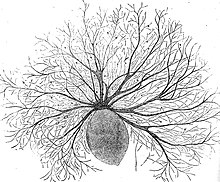
Velvet disease (also called gold-dust, rust and coral disease) is a fish disease caused by dinoflagellate parasites of the genera Amyloodinium in marine fish, and Oodinium in freshwater fish. The disease gives infected organisms a dusty, brownish-gold color. The disease occurs most commonly in tropical fish, and to a lesser extent, marine aquaria.[1] Periodic use of preventive treatments like aquarium salt can further deter parasites. Regular monitoring, attentive care, and preventive measures collectively contribute to keeping fish healthy and velvet-free.
- ^ "Protozoa Infecting Gills and Skin". The Merck Veterinary Manual. Archived from the original on 3 March 2016. Retrieved 14 September 2017.
One of the most serious health problems of captive marine fish is the parasitic dinoflagellate Amyloodinium spp. Its freshwater counterpart, Oodinium spp, is less common but can also result in high mortality. These parasites produce a disease that has been called "velvet," "rust," "gold-dust," and "coral disease" because of the brownish gold color they impart to infected fish. The pathogenic stages of the organism are pigmented, photosynthetic, nonflagellated, nonmotile algae that attach to and invade the skin and gills during their parasitic existence. When mature, these parasites give rise to cysts that contain numerous flagellated, small, free-swimming stages that can initiate new infections